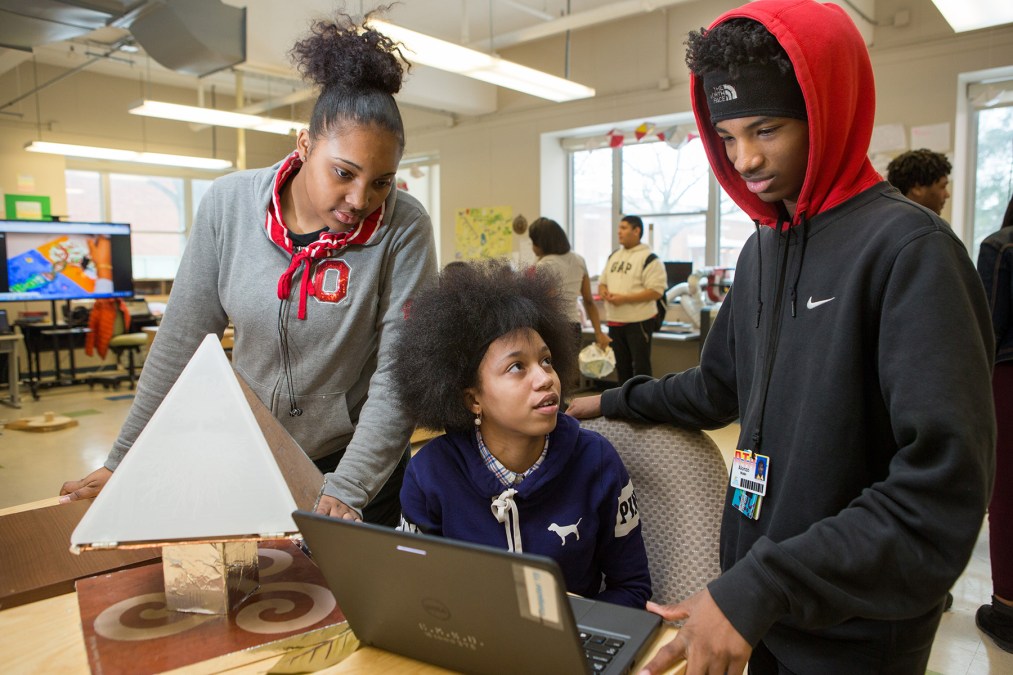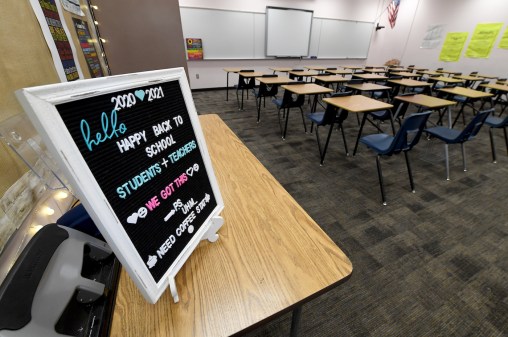CoSN names top 5 hurdles facing K-12 innovation in latest report

Keeping up with the changing digital ecosystem to improve learning and opportunities for all students is vital to driving K-12 innovation, according to a report published Tuesday.
The “Top Hurdles 2019” report, published by the Consortium for School Networking, named the top five hurdles facing the adoption of technology in K-12 learning environments. They are:
- Scaling and sustaining innovation
- Digital equity
- The gap between technology and pedagogy
- Ongoing professional development
- Technology and the future of work
The report says technology is often conflated with innovation in educational settings, rather than being seen as a tool to support changes. The report acknowledges, though, that technology is closely intertwined with innovation. The strategic application of technologies is essential in creating meaningful teaching and learning experiences and meeting the educational needs of all students, the report says.
According to CoSN, the hurdles impeding K-12 innovation make educational leaders slow down, evaluate, practice and then make the leap to better support teaching and learning. The report reflects the shared opinions of 111 educational technology leaders.
Kim Flintoff, learning futures adviser at Curtin University in Australia, said in a webinar hosted as part of the report’s release that until all hurdles are addressed independently in an educational system, it will not be completely healthy.
Scaling and sustaining innovation
According to the report, scaling and sustaining innovation is the most difficult hurdle for education to overcome. Many school systems lack the agility, strategies and mindsets to grow innovative technology practices and implement them across an entire school system instead of in a few classrooms.
Tony Inglese, chief financial officer of Batavia USD 101, a school district in Illinois, said, “the expectation is that everyone succeeds.” In the past, education was focused on efficiency and students fell by the wayside because their education didn’t address or meet their needs, he said, but now, thanks to technology, schools can be more responsive to the needs of every student, and personalized education can be scaled to include all children.
Digital equity
Ensuring that all students have equal access to technology has been a frequently discussed topic as more technology enters the educational space. Heather Gauck, a resource teacher at Grand Rapids Public Schools in Michigan said she has seen a disparity in access to technology in her schools. “Some districts have been one-to-one for a long time,” she said. “Others just recently passed legislation to give students access to devices.”
Gavin Dykes, managing director at Cellcove Ltd. in the United Kingdom said, “To address digital inequality, schools need to address infrastructure, student needs, parent engagement and teacher training.”
The gap between technology and pedagogy
As classrooms implement more digital tools, schools need to effectively stitch technology together with curriculum, the report says. Daniela Silva, director of tech and learning innovation at Colegio Roosevelt in Lima, Peru, said that it is important to not only to give teachers technology for technology’s sake. It is important for teachers to explore, learn and fail with technology to familiarize themselves with its capabilities, she said.
Gauck said that often when teachers are learning about technology and pedagogy, it is done separately, which creates a divide between the two. To bring these two pieces together, there needs to be a deliberate plan to integrate technology into curriculum so that it can be an effective learning and teaching tool.
Ongoing professional development
According to CoSN, meaningful professional development of innovative teaching practices is vital for successful technology integration. The traditional one-fits-all, sit-and-get training has little impact on a teacher’s classroom practices and doesn’t benefit student achievement, the report says. Instead, it suggests personalized training can be used to help teachers become lifelong learners.
Technology and the future of work
The demands of future work are going to require a range of new skills — many relating to technology — and in order ensure students’ future success, teachers will have to embrace curriculum to develop these skills, Dykes said. Technology is sweeping people along and changing the workforce, he said. To keep pace with the changing landscape, he said, “you need to have fluency and engagement with technology.”
“Technology is changing at breakneck speed, and the pace only continues to accelerate,” said Keith Krueger, CEO of CoSN, who added that in order to ensure student success in this digital world, schools will have to overcome the hurdles impeding innovation in K–12 education.




